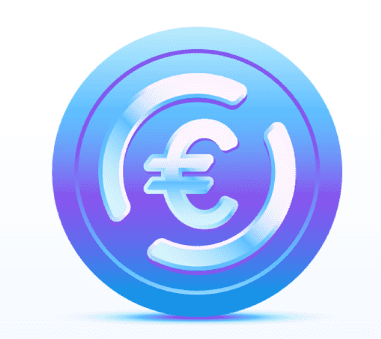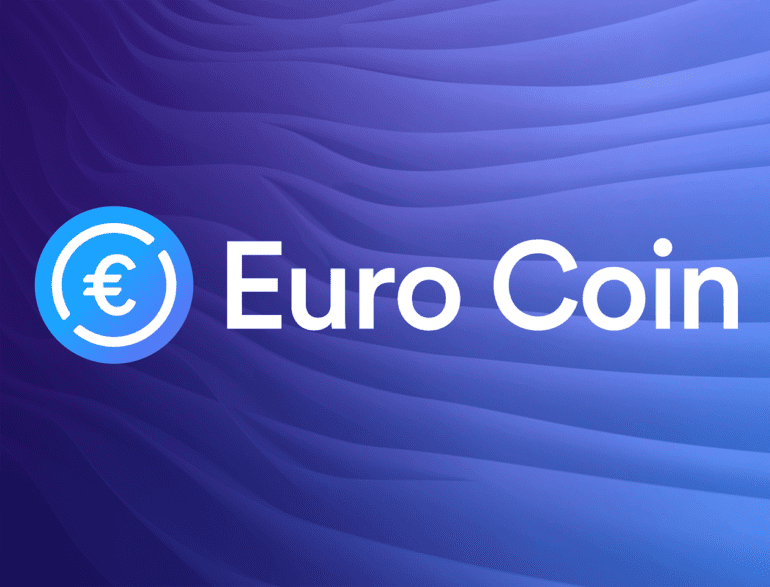While the world awaits the “on the way” ethereum proof of stake merge, there are rumblings of stablecoin regulation at an international level.
Teana Baker-Taylor, Circle’s UK VP of Policy, has those conversations daily, advocating on behalf of careful crypto adoption to regulators at a parliamentary level.
She said that despite down markets and crashing DeFi actors, hope and positivity abound.
“I would say that [regulators] they’re excited. They are more open to the opportunities than three years ago,” she said. With the rise of widely used stablecoins in payments, she said it became easier to have conversations with lawmakers.
“During the last bull run, crypto was still having to contend with the narrative that cryptocurrencies were invented for people to circumvent the system,” Baker-Taylor said. “I think that that narrative is dying down, and now they ask, ‘tell me how they’re used.'”
Circle’s Euro coin enters the chat
At the end of June, Circle launched a Euro-backed stablecoin, and Baker-Taylor said it was only the beginning.
“Today, Euro Coin is institutional innovation. But there is a developing retail market for these innovations. Still, the infrastructure needs to be built out so we can have this kind of Device Centric economic activity across the border,” Baker-Taylor said. “I think USDC is the first, but I could see a world where Circle has multiple digital currencies and local denominations.”
Why launch a Euro-based denomination? The answer is clear, Baker-Taylor said, the Euro is the second-most-used currency after the dollar. She pointed to the vibrant USDC-based ecosystem that has sprung up since the coin’s launch in 2018, what she called a financial system that stays separate from the traditional one.
When prices collapse and markets close, customers don’t leave crypto entirely during bad storms; they flock to safe ports, she said.
“During the Terra situation, there was a flight to safety, where people don’t want to exit crypto markets entirely but stay within the crypto ecosystem they move into USDC,” she said. “There are over a dozen bridges, USDC supports thousands of companies, products, and services, 190 countries across all leading exchanges- while other companies have corrections we continue to mint.”
Looking at that vibrant industry spawned in four short years, Circle added the runner-up world reserve currency. Baker-Taylor said the firm believes that a well-regulated and backed Euro digital currency can be a pillar of a new ecosystem.
Safety in numbers
“If the dollar props up trillions of dollars of economic activity, then if you think about a responsible, trusted, well regulated, stablecoin, that provides that same function for the digital asset world,” Baker-Taylor said. “Where a responsible stable coin goes, you can now support a host of other economic activities.”

Baker-Taylor said building guardrails to keep customers safe meant working with regulators and central banks; all ecosystem members must collaborate toward mutual success.
“If your stablecoin is interoperable across blockchains, designed to support open wallets and exchanges if it maintains prudential standards, has a parody of reserves in liquid assets, that’s where the trust comes in over the long horizon,” she said. “Today’s stablecoin is tomorrow’s Central Bank Digital Currency; Central banks need to have the guardrails around them to protect an air gap between central bank money and personal wallets that consumers spend with.”
What will it take to adopt payments?
Circle works as an institutional partner of exchanges, market makers, and firms; it does not have a consumer-facing product. Baker-Taylor said like the device-centric revolution of the ride-share industry after the launch of Uber and Lyft, the world is going through a device-centric payment and capital market revolution.
That revolution is still held back, but Baker-Taylor said Circle would be at the center of the breakthrough when it happens.
“We’re seeing this explosion of always-on Device-Center payments, but we’re not doing this alone. We’re not a retail-facing company where people come to circle to buy USDC. Instead, some of the largest are participating,” she said. “The bridge into digital assets from the real economy is the breakthrough, and I think it is the catalyst that creates trillions of dollars of economic activity.”
The fundamental roadblocks right now are front-end experience; she said the difficult-to-use wallets are clunky to use, like fintech UI from 10 years ago.
“I also think that once you have regulation in place, both businesses and consumers feel a level of confidence that they’re not using something out there in the wild wild west like,” she said. “This is a real thing, and there is potentially recourse or protections, and I think adoption will grow.”
How this cycle compares to last
Nothing stifles adoption like the cold of crypto winter. Regarding adoption, Baker-Taylor said this season was not a crypto winter but a slowdown caused by a rash of liquidations. When she first entered the crypto world. During the last bull run, she said it was an actual explosion of projects without any use case to back up the volume.
“So I think in the last cycle, it was an explosion,” she said. “The ERC 20 token and the ability for anybody to create a token was explosive. But there weren’t necessarily use cases or sound roadmaps behind several projects. Some of that was intentional, and some of that was maybe a lack of experience or leadership.”
She said it was a time of great crypto cleansing, and companies with bad models or no intention of actually following through with a plan disappeared. As in all down times, companies that weathered the period became stronger, more robust, and smarter. This time around, though prices dropped, the fundamental backing is finally there.
“Policymakers often ask, ‘What is this good for anyway? How do people use this?’ In 2017, we didn’t have a good answer to that question. Today, we do.”
Can regulation be positive?
In the face of unsure change, are regulators in the UK overall positive on crypto? Baker-Taylor said in a word; they were excited. Industry members have made it clear: the drug dealing and human trafficking narrative is old and played out, and no professional wants to help facilitate crimes.
After government comes around to that realization, they can move on to helpful laws. The benefit of good regulation allows a couple of things: it enables companies to invest capital in a settled jurisdiction with confidence, she said.
“You don’t want to move and set up your business in Lisbon because you heard that Portugal will be the next crypto place, and then Wham: you have to pick up and move.”
Baker-Taylor said nothing is worse than doing business under terms that appeared fine at the moment but come under question after laws shift years later.
“For example, Singapore, and the UK right behind them, put a temporary advertising ban in place, while regulation is sorted out,” Baker-Taylor said. “People are promising the world, on social media, tube stations, and bus stops, and the average consumer thinks they can get 20% returns if they buy a coin.”
She said she believes people should have the sovereignty to spend their money as they choose, but some of us are vulnerable, and we need standards on what we can say, what the returns will be, and who is held accountable.
“These types of guardrails, around sound business practices, will only be helpful for everyone.”



